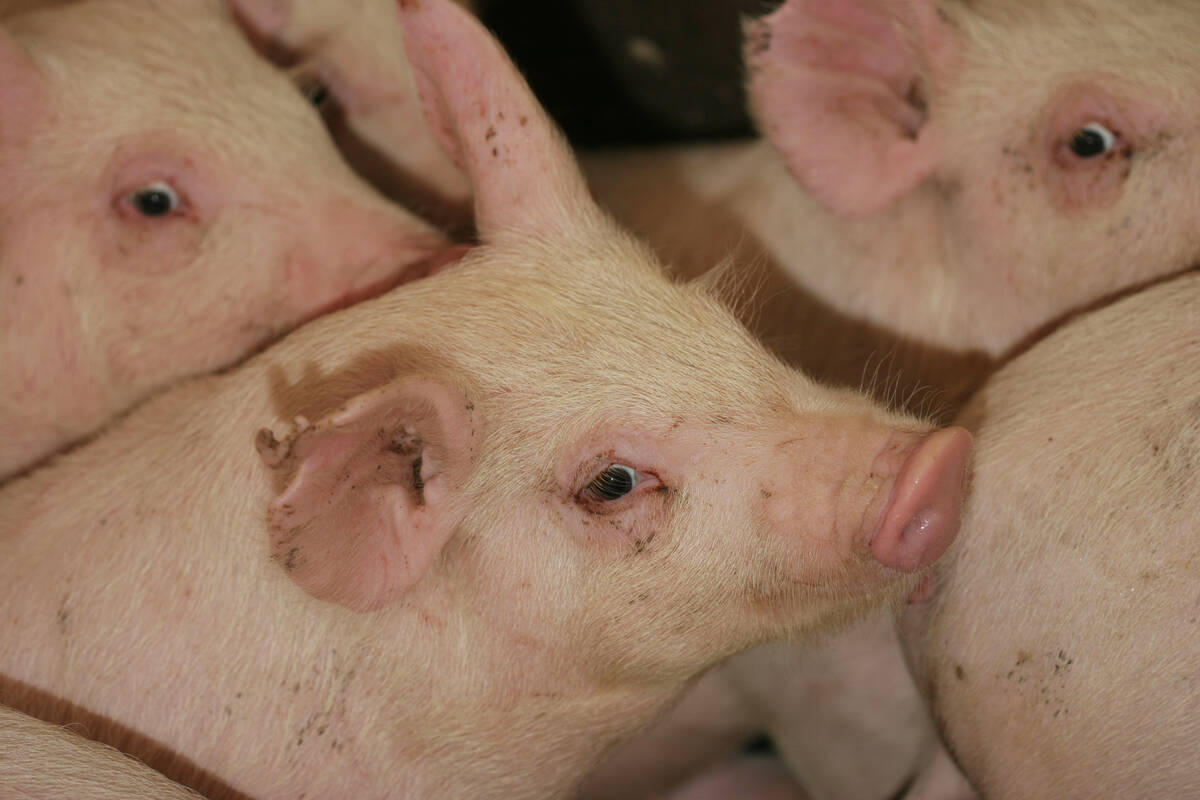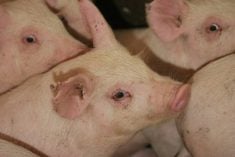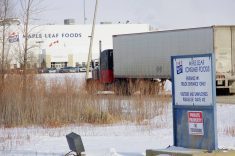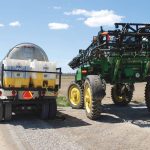Problems facing Alberta’s hog producers are black and white and not pretty.
The Way Forward, a 180-page special report on the troubles facing Alberta’s hog industry, doesn’t sugar coat the problems.
“It clearly laid out what we have to deal with to maintain a viable pork industry,” said Alberta Pork executive director Paul Hodgman.
Seeing the list of issues blocking producers from making money is a clear sign that hog production in the province has to change, Hodgman said.
Alberta Pork hired Toma and Bouma Management Consultants of Edmonton and the George Morris Centre of Guelph, Ont., to look at the troubles and find solutions.
Read Also

The Western Producer Livestock Report – September 25, 2025
The U.S. national live price average for barrows and gilts was $81.21 Sept. 17. It was $78.37 Sept. 9. U.S. hogs averaged $106.71 on a carcass basis Sept. 17, up from $106.10 Sept. 9.
“The Alberta pork industry is in the midst of an unprecedented financial crisis,” the report said. “Prices have dropped, input costs have increased dramatically and cash losses are mounting at such astonishing rates that producers, feed companies and input suppliers face financial ruin.”
Hodgman said the report made evident how much impact feed costs have on profitable hog production.
“It’s a bit of a wake up call.”
Hodgman said hog producers have long lived with cheap feed grain. They could always buy barley that didn’t make malting grade or frost-damaged wheat for a reasonable price. With grain making up 65 to 70 percent of the cost of raising pigs, the change to higher feed prices is significant.
“We build the industry on residual feed market and that’s not going to be there in the future.”
Funneling lower quality grain to ethanol and biofuel production has ended any hope of finding cheap grain, he added.
“All of a sudden there’s another critter at the trough.”
The report found that high grain prices have affected hog sectors around the world but none more than Alberta.
“This is due in part to the fact that Alberta feed grains are dedicated to food demand, while U.S. corn is largely sold into the feed grain system,” the report said.
“In terms of feed costs, labour costs and replacement boar and gilt costs, Alberta is now the highest cost pork producing region in North America compared to 1998 when it was the lowest.”
The report also pointed to the rapidly rising Canadian dollar, intense competition from the United States and a lack of processor competitiveness.
“None of our major issues are really quick fixes,” Hodgman said.
The report said building a competitive hog industry will require a dramatic overhaul of the industry and identified four key areas for change:
- Establishing new markets built on product quality, supply assurance and customer focused strategies. Alberta should not compete as a low-cost supplier.
- The need to organize and build a highly connected industry that links customers, processors and producers. Producers must capture maximum value and eliminate unnecessary costs.
- The ability to secure cost competitive inputs as a way to stay competitive with the U.S.
- The need to operate within a business and political environment that allows market access, regulatory reform and long-term financing.
Details of the strategy to overhaul the industry are in a final report that will be presented to producers May 28-29.
Alberta Pork briefed Alberta agriculture minister George Groeneveld, Western Hog Exchange and Olymel to give them a general idea of the direction they want the industry to move.
“I don’t think the status quo is an option,” Hodgeman said.














